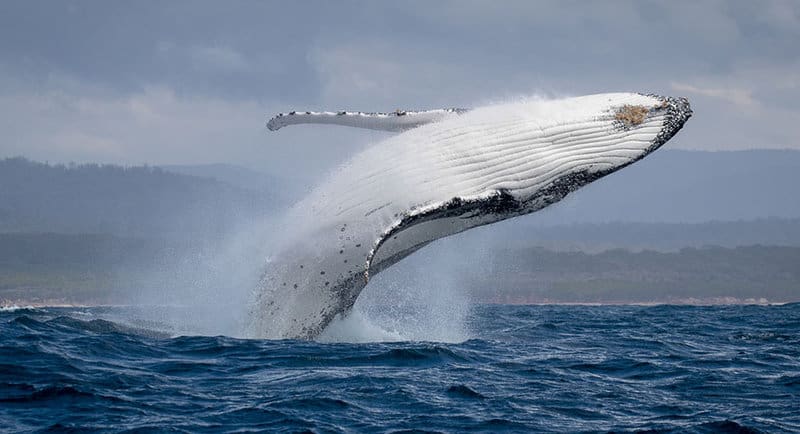They say in show business that you should never work with children or animals, but some rules are made to be broken. Airing on the winter solstice, ABC’s Southern Ocean Live is getting ready to bring all the magic – and creatures great and small – of the Southern Ocean to lounge rooms across the country.
Broadcasting from the Southern Ocean Live HQ at Phillip Island’s Penguin Parade, hosts Dr Ann Jones and Hamish Macdonald will be holding the fort while marine scientists Sheree Marris, Lucas Handley, and Dr Dean Miller will be reporting live from under the water.
The whole project follows on from 2020’s Reef Live, and will once again be produced by Northern Pictures head of factual Karina Holden.
Mediaweek spoke to producer Karina Holden and host Dr Ann Jones ahead of the live broadcast on Tuesday June 21st at 8.30pm on ABC TV and ABC iview.
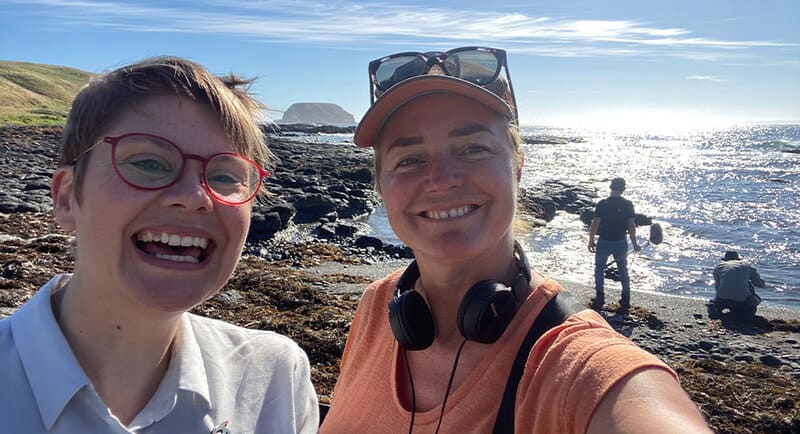
Dr Ann Jones and Karina Holden
This will be the second time the team takes to the sea, with Reef Live documenting the coral spawn on the Great Barrier Reef in 2020. Holden says Southern Ocean Live came hot on the heels of the first show.
Holden: “I was a conservation biologist by training before I became a natural history filmmaker. I have been living this content all of my life. I’m passionate about the marine world and Australia’s oceans and just how incredible they are.
“It was just an absolute thrill to pull Reef Live together and to be involved. After that show, I was on the plane flying home from Cairns and I wrote up this show.”
Holden and Jones both say that while the shows are very similar, there will be some major differences this time around.
Jones: “It’s a different set of phenomena that occurs. With Reef Live, there was a mass spawning event – almost all of the reef goes at the same time in its spawning. It also goes by cycles on the moon, so they’ve got a pretty good idea of when it’s going to happen. For Southern Ocean Live, a lot of major events that happen at this time are migrations, and things like that.”
Holden: “We learned heaps last time we did the show – nobody had ever done any live natural history in Australia before. Nobody had ever broadcast live at night doing natural history, and nobody had ever done it from underwater with returns back to the audience anywhere in the world. It’s a real world first, and we’re really proud to be leading that.”
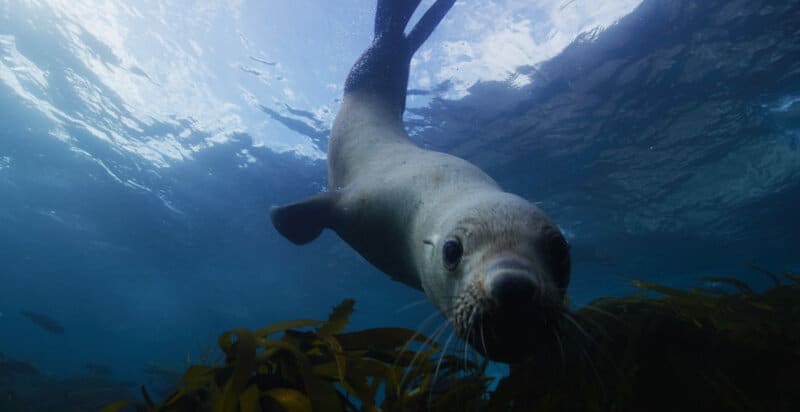
Australian fur seal
Live broadcasting is filled with things that could possibly go wrong at the best of times, let alone when half your crew are underwater – in this case, diving off the coasts of South Australia and Victoria.
Holden has been overseeing the technical aspects of the show.
Holden: “We’ve got divers who will be in the water with underwater communication face masks. They can actually listen back to the studio through speakers – we broadcast the show underwater so that the divers can hear the broadcast and they know when they’re being cued in to speak. They speak via face masks that have microphones in them. Those cables return to the surface, up to boats that have satellite uplinks on them that are going on to receivers on land, and then bouncing across to Philip Island.
“There’s an incredibly complex technical aspect of the show. We work with NEP, the broadcasting OB company – they do the Australian Open, the Olympic and Commonwealth Games, and all the AFL. We’re bringing the knowledge of people who work in live sporting events to this intersection with natural history filmmaking, which is so exciting.”
As for the unknown about what animals will show up on the night, Jones says that’s all part of the fun.
Jones: “That’s part of the jeopardy of this type of television, because it’s in some way the most realistic way of coming at nature. When you go out doing something like bird watching, some days you see the most amazing things and other days, you see almost nothing. Who knows which way it’s going to go.”
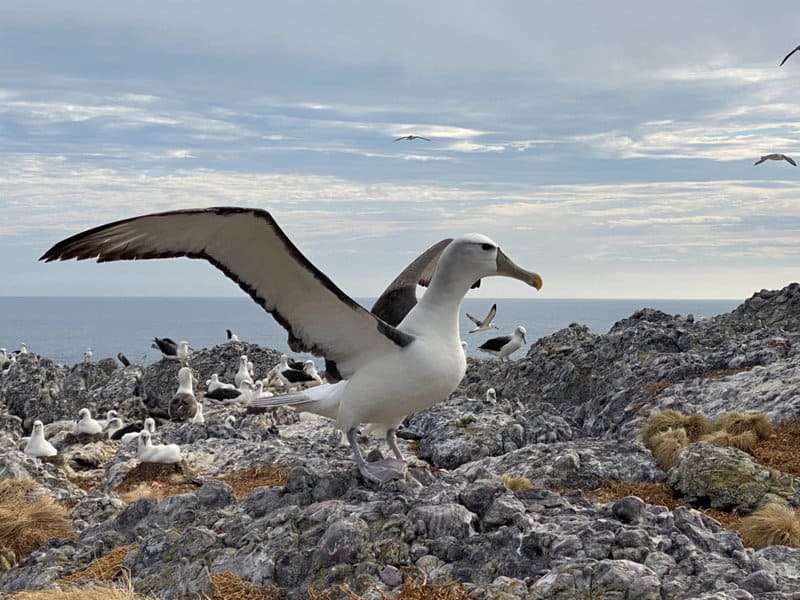
Shy albatross colony
The pair hopes that the audience who come along for the journey on Tuesday night will be left with a deeper understanding of what actually goes on in the deep.
Jones: “When people think of winter, they often think of the snow in the highlands or seeing the leaves change. But actually, some of the most spectacular things that happen, happen off the southern coastline. All of this cold water is coming around and forcing the movement of these animals – it’s spectacular, it’s just that it’s harder to see.
“What I’d want people to come away with is, hopefully, a respect and acknowledgement that there’s just a whole world of amazing natural phenomena out there that we only know a tiny little bit about.”
Holden: “It’s absolutely chokkas with incredible stories. We’ve been filming stories in the lead up, so the show is a combination of live and pre-recorded. In our pre-recorded packages, we have so much glorious content. We’ve got killer whales hunting, we’ve got stories about great white sharks. We’ve got stories from Tasmania’s kelp forests and the unbelievable mass migration of the spider crabs up into the shallows of Port Phillip Bay.”
“80 percent of all animals that live in the southern coastlines off Australia do not occur anywhere else on Earth. We’ve filmed things with the show that have never been recorded before – including Hamish MacDonald right in the middle of an incredible megapod of feeding whales. It’s spine-tingling watching it all come together.”
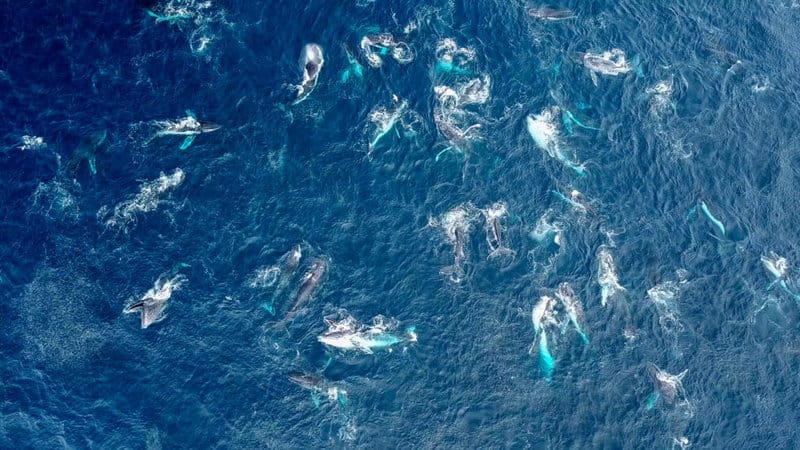
Humpback whale megapod feeding
For those who can’t get enough of the creatures of the Southern Ocean, Holden and Jones have a second project they’ve been working on. Meet The Penguins airs next week on Tuesday 28 June at 8.30pm on the ABC, and shows that whilst the Little Penguins may be the world’s smallest penguin, they might just be the toughest too.
Jones: “We’ve been shooting over the last breeding season – it was just amazing. Penguin chicks are just next level stupid, they just look like tiny little Muppets! What’s even better is that when they become adolescents, they moult in such a fashion that they get mullets.
“But the penguins do tell a story of ocean health. They do spend time on land, but they spend about 80% of their time in the water, so the health of the penguins when they come back to breed tells the researchers a lot about what’s going on out there in the ocean.”
